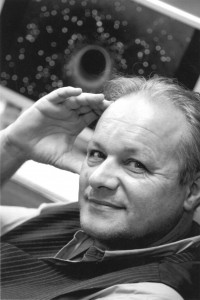 I like to share my various interests for science, art, literature and many other fields. As there are already a lot of excellent blogs devoted to astrophysics, physics, general relativity, cosmology, etc., my own blog will be more specifically devoted to « scientific culture », trying to cover some of my fields of interest and activity at the intersection of science, history, literature, art, philosophy.
I like to share my various interests for science, art, literature and many other fields. As there are already a lot of excellent blogs devoted to astrophysics, physics, general relativity, cosmology, etc., my own blog will be more specifically devoted to « scientific culture », trying to cover some of my fields of interest and activity at the intersection of science, history, literature, art, philosophy.
This anglophone blog, «e-luminesciences», is NOT a translation of my francophone blog «luminesciences» (https://blogs.futura-sciences.com/luminet/, that I recommend to all the lovers of French culture), since it will present original posts as well as some ones adapted from their French version.
Have a nice time !
How to simplify our vision of the twin paradox.
Time dilation is since Einstein reported in a rather complicated manner.
We look at the transported clock “A” with the “point de vue” from our fixed clock “B”. And of course we find that “A” runs slow.
But we forget that “all the laws of physics are the same in every inertial frame of reference”. That means ː if we transport , at constant speed a sister clock “A” of “B” , that sister clock runs exactly at the same rate than “B”.
And if we measure , with “A” , a certain amount of time between the initial position of “A” and its final position , we will find the correct answers (that is with the Lorentz transformations) , with never having thought that “A” runs slow. That means we dissipated any confusion between the physical clocks and time they measure ǃ
Of course we must also explain what happens in the acceleration – deceleration phases , but it is now well-known that the contribution of these phases are negligible. And also that modern clocks are almost insensible to accelerations ǃ
That interpretation is not only easier to explain , but it simplifies the experimental analysis. We understand how there is in space-time a sort of trading between space and time.
What do you think of my statement ?
Cordially
What matters is not the duration of acceleration phases (which can be very short) but the difference between the spacetime lengths of the twins’ trajectories. A striking illustration of this is the twin’s paradox revisited for multiply connected spacetimes, see e.g. my article https://arxiv.org/abs/physics/0006039